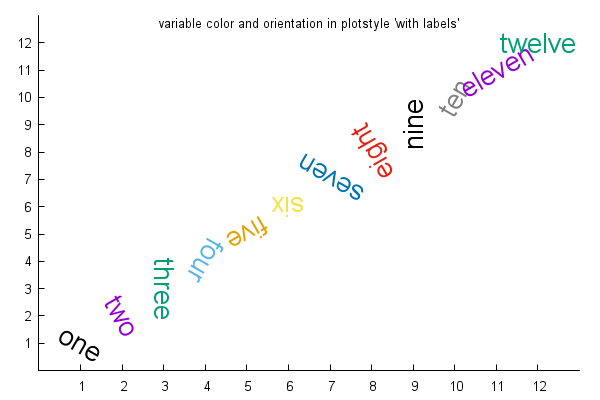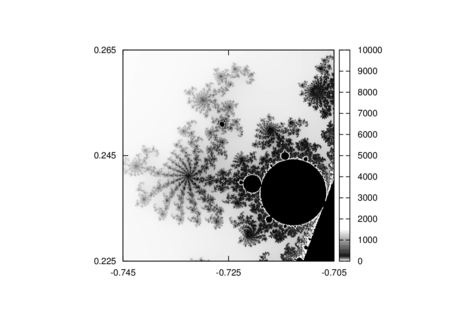
difference between two successive major tics on X-axis, it has another version which will set the start time and end time too having the format `set xtics "start", "interval", "end"` e.g. set xtics font ", 15" # Will rotate the major tics on X by 90 degrees counter clock-wise #set xtics rotate by 90 # Range of intervals i.e. # The label format of the major tics on X-axis, the specifiers are similar to `set timefmt` set xtics format "%H:%M" # Sets font name and size for major tics on X-axis. These can be manipulated by `set mxtics` and `set mytics` for X-axis and Y-axis respectively. These occur in between the major tics and are not associated with an input. # - There is another kind of tic-mark known as minor tics. `set xtics` is used to manipulate major tic options on X-axis, similarly `ytics` is used for Y-axis. on X-axis the time `01:30`, major tic-marks always refer to an input value. For example, if our input is in the form ` 14:45:34` then we would use `set timefmt '%Y-%m-%d %H:%M:%S'` set timefmt "%H:%M" # Things to note for the `tics` options: # - A `tic` is a point of notation on the graph. set xdata time # Indicates the format of the X-axis data given in the input, In our case we have used `Hour:Minute` format.

# By default the resultant image is shown on STDOUT, `set output` redirects the output to the given file, the filename must be enclosed in double quotes set output "/tmp/out_image.jpg" # `set xdata` indicates the datatype used on the X-axis, `set xdata time` indicates the datatype is date/time. Here we are generating JPEG image having size of 1200x800 pixels. `set term` indicates what type of output to generate. set title "Time vs Number of Users" font "calibri, 25" # Label on X-axis and font set xlabel "Time in HH:MM" font "calibri, 20" # Label on Y-axis and font set ylabel "Number of Users" font "calibri, 20" # `set` is used to set options of GNUplot. We can also set only the font size keeping the font as default which is "arial" e.g. We are setting the `font` as "calibri" and font size as 25. Here is a snippet of the input file `input.txt` (remove the hashes, of course) by default the output is shown on STDOUT, we're saving the output plot as `/tmp/out_image.jpg` (see below): #12:00 2345 #12:15 5084 #12:30 2490 #12:45 3490 #13:00 4567 #13:15 4240 #13:30 3210 # `set title` sets the title of the graph/image, `font` sets the font name and size.

Here it is again, in script form: #!/usr/bin/env gnuplot # We are plotting a time-series data, Time in `HH:MM` is separated by a space with their respective Number, you can think of the number as the Number of Users of an Application.

While roaming around, found an old Gist of mine, discussing about gnuplot - the command line plotting tool for GNU/Linux systems. Check the following anycodings_axis example as starting point, maybe there anycodings_axis are smarter solutions.After a long time, I've started commit-ting to GitHub again (will keep on using GitLab too).

You need to fix the anycodings_axis margins to get the plots exactly on top anycodings_axis of each other. Ī quick and dirty solution would be anycodings_axis using multiplot. As I understand the documentation (check anycodings_axis help xtics) you can have the tics either anycodings_axis at the axis or at the border but not anycodings_axis both.


 0 kommentar(er)
0 kommentar(er)
